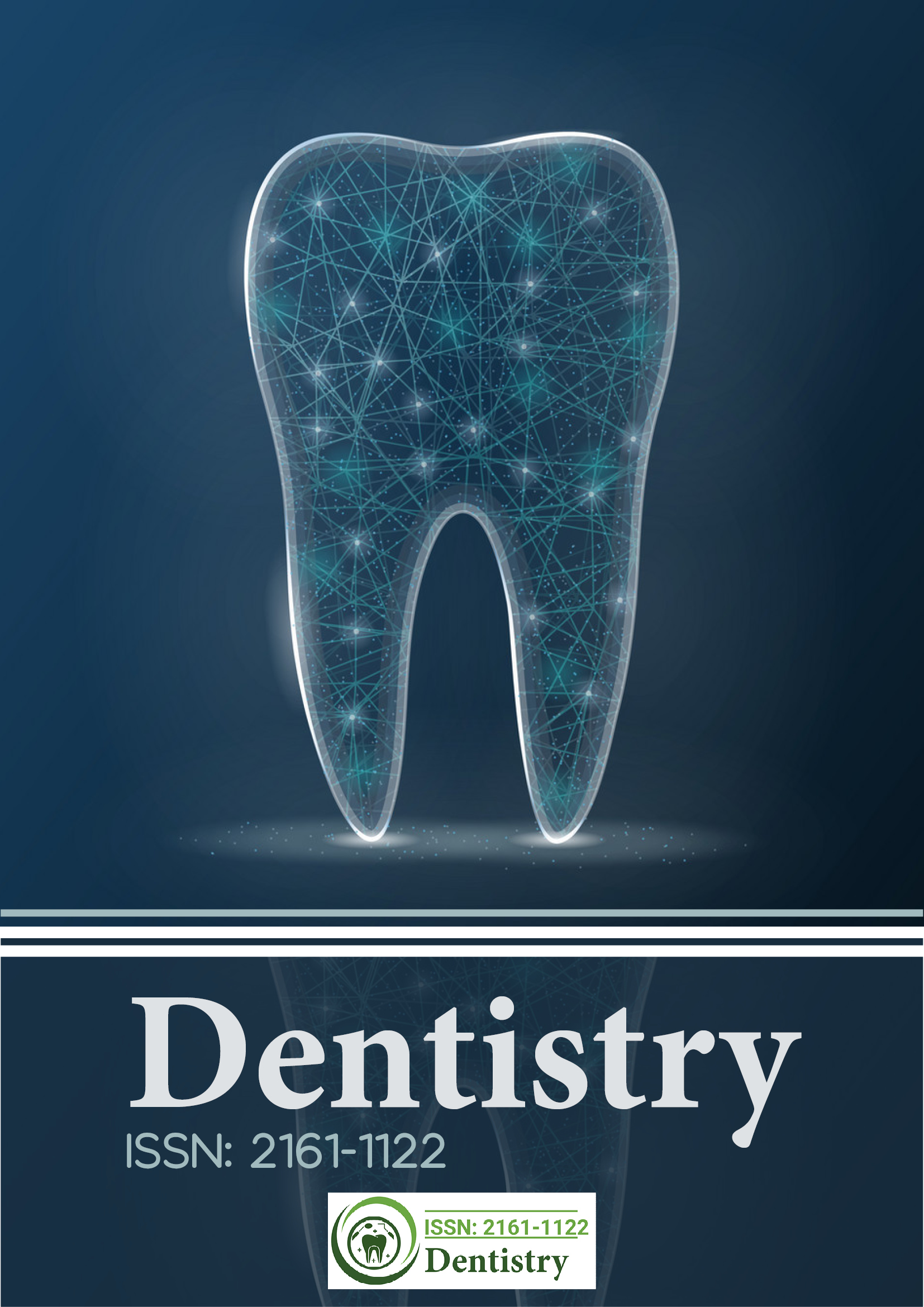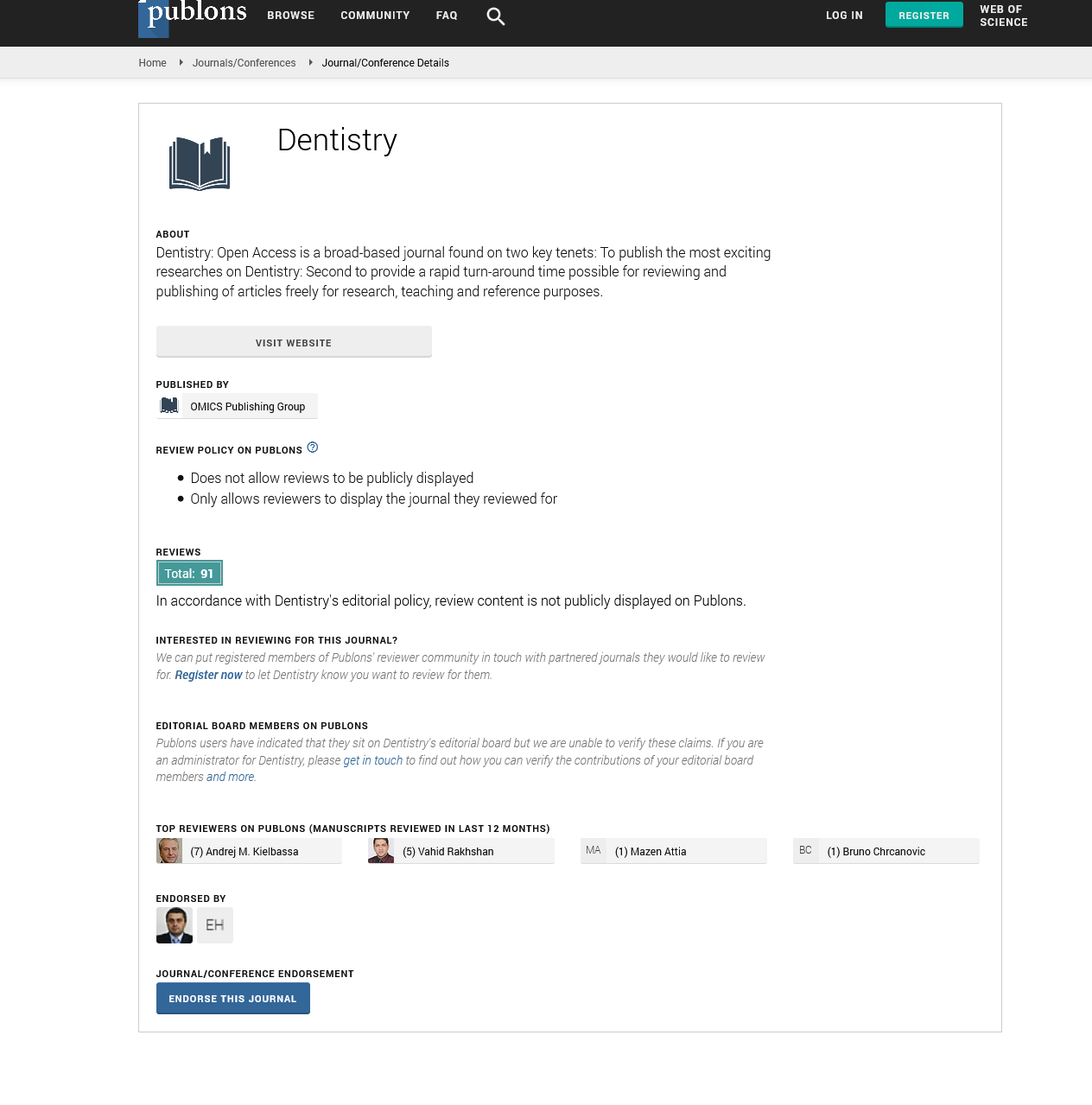Citations : 2345
Dentistry received 2345 citations as per Google Scholar report
Indexed In
- Genamics JournalSeek
- JournalTOCs
- CiteFactor
- Ulrich's Periodicals Directory
- RefSeek
- Hamdard University
- EBSCO A-Z
- Directory of Abstract Indexing for Journals
- OCLC- WorldCat
- Publons
- Geneva Foundation for Medical Education and Research
- Euro Pub
- Google Scholar
Useful Links
Share This Page
Journal Flyer

Open Access Journals
- Agri and Aquaculture
- Biochemistry
- Bioinformatics & Systems Biology
- Business & Management
- Chemistry
- Clinical Sciences
- Engineering
- Food & Nutrition
- General Science
- Genetics & Molecular Biology
- Immunology & Microbiology
- Medical Sciences
- Neuroscience & Psychology
- Nursing & Health Care
- Pharmaceutical Sciences
A coralline-derived peri-implant bone graft
37th International Conference on Dentistry & Oral Care
March 27-28, 2019 Sydney, Australia
Mark C Perry and Sandra Ammonn
Dentistry on King, Canada
Posters & Accepted Abstracts: Dentistry
Abstract:
Marine corals have been known as potential human bone graft substitutes since 1979. The structure of marine coral is similar to human bone. Its components, structure and property are similar to the inorganic components of human bone. Coralline Hydroxyapatite’s biocompatibility is derived from the exoskeleton of the high content calcium carbonate scaffolds. Coralline hydroxyapatite is manufactured from marine coral. Marine coral has a trabecular structure similar to that of human bone. The benefits of coralline hydroxyapatite include its biocompatibility, osteoconductivity, biodegradability and safety. It avoids immune rejection that may occur with the use of allografts. Its rate of action depends on the porosity of the exoskeleton and the site of implantation. Its use as a carrier for autogenous bone grafts during oral surgical procedures including extractions, implant surgery and periodontal surgery. Coralline hydroxyapatite provides a structure and support mechanism to guide the formation of new bone. Synthesized hydroxyapatite offers poor porosity for the promotion of vascular and hard tissue. Coralline hydroxyapatite has a similar pore structure as human cancellous bone. A step-by-step procedure of coralline-derived peri-implant bone graft is: Collect autologous bone graft material, utilizing the Osseous Coagulum Trap, from an extraction procedure, surgical implant procedure and/or a suitable donor site. Mix the coralline hydroxyapatite graft material with the autologous bone (from the Osseous Coagulum Trap) and autologous blood. Utilizing a suitable carrier place the autologous/coralline bone graft into position in the alveolus to create a stable graft location in order that osteoconductivity may begin immediately. Ensure sutures are not under high tension, do not over-fill the alveolar cavity with the graft and prescribe antibiotics and an anti-bacterial mouth rinse post-operatively. Allow four to six months of healing to occur before determining radiographically if the implant and graft material are fully osseointegrated. There are four major features of coralline hydroxyapatite: Biocompatibility, strength similar to bone, promotion of remodeling and bioactivity; it attracts and hosts new bone cells. Autologous bone should be preserved utilizing the Osseous Coagulum Trap. Coralline hydroxyapatite is a suitable biocompatible bone graft material. Coralline hydroxyapatite should be mixed with autologous bone graft material and autologous blood to form an alveolar bone graft. Utilizing a suitable carrier the bone graft can injected into a suitable graft location. The graft bio-compatibility should be followed radiographically for 4-6 months. This graft technique can be utilized during implant surgery, general oral surgery and periodontal surgery. This is a simple, cost-effective bone graft procedure used to treat extraction sites, implant surgical sites, periodontal bone loss and peri-implants.
Biography :
E-mail: info@dentistryonking.com

